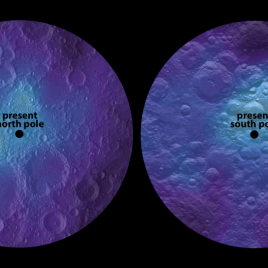The moon once rotated on a different axis than the one it does today, according to researchers. Polar hydrogen deposits are located near the Moon’s poles, however their location is inconsistent with where ice would be expected to form with the current thermal environment of the moon. Researchers found that the Moon’s polar hydrogen deposits […]
Tag: space
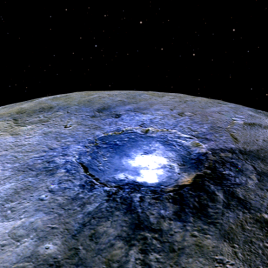
Bright spots on Ceres suggest water on the dwarf planet
Bright spots on the surface of Ceres suggest there is water activity in the main asteroid belt, and that asteroids may be more active than previously thought. Researchers analyzed data obtained from the Dawn spacecraft to make detailed observations of Ceres surface. The researchers detected 130 bright spots, which they believe contain haze, showing the involvement […]
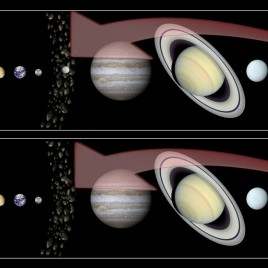
Is Ceres from the outer Solar System?
The dwarf planet Ceres may have formed from minerals found in the outer Solar System, according to data taken by the Dawn Spacecraft. Researchers identified specific minerals, which are widespread on the planet’s surface. The minerals suggest ammonia was incorporated into the planet during its formation. Original research paper published in Nature on December 9, 2015. Names […]
How to build a gas giant
Using computer simulations researchers have modeled the evolution of the gas giants in the Solar System, potentially providing an account for how the largest planets in our system formed. The study shows that when small centimeter- to meter-sized “pebbles” slowly accumulate they form planetesimals which become the cores of gas giants. It was previously thought […]
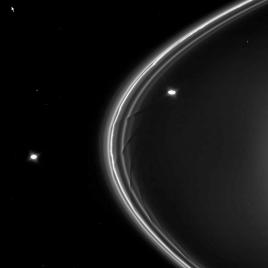
Explaining the origin of shepherd moons
The origin of “shepherd moons” in planetary rings such as those found on Saturn and Uranus may be a natural consequence of ring evolution around giant planets. Studying the two shepherd moons in Saturn’s F ring system, Prometheus and Pandora, researchers has found how these moons may form. Using computer simulated collisions between icy moonlets […]
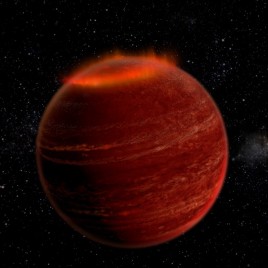
Powerful aurora seen 18.5 light years away
Astronomers have detected auroral activity, seen on Earth as the Northern and Southern Lights, on a stellar object, believed to be a brown dwarf, outside of our Solar System. The team simultaneously detected radio and optical auroral emissions from the extrasolar body LSR J1853, located 5.67 parsecs or 18.5 light years away from our Sun. Additionally […]
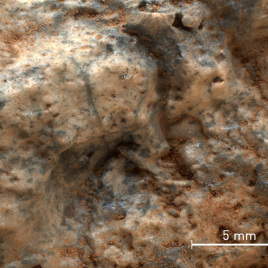
Martian crust shows similarities to the Earth’s oldest continental crust
Silica-rich rocks found in the Martian crust shows ancient Mars may have been more similar to Earth than previously thought. These rocks are similar to some of the Earth’s oldest continental crust, which have, until now, only been observed in small, localized areas on Mars. The new findings suggest the the Red Planet has experienced […]
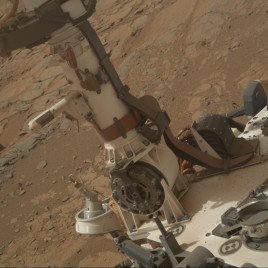
A place for life to form on the Martian surface?
Thin films of liquid brines which could hypothetically support life may form daily on soil on Mars and evaporate overnight, according to a new study. The Curiosity rover, which is traversing Gale crater on equatorial region of Mars, has detected a type of salt called perchlorate. Perchlorate salts both lower the freezing temperature […]
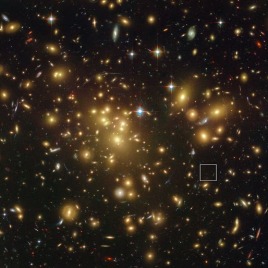
Changing when stars were formed
A galaxy from the early universe is providing new insight on the formation of stars. Researchers have found one of the youngest and most remote galaxies, estimated to have formed when the Universe was approximately 700 million years old. The astronomers believe the galaxy has either been consistently forming stars at a moderate rate since […]
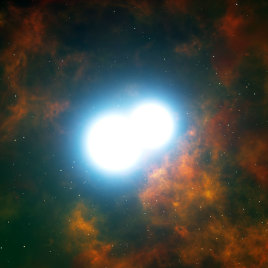
First of its kind star system spotted
While attempting to explain the odd shapes some planetary nebula researchers discovered the pair of stars that could be the first instance of two white dwarfs merging and exploding into a supernova. This finding supports the idea that double central stars may explain the odd shape of some nebulae. The researchers believe this is the […]
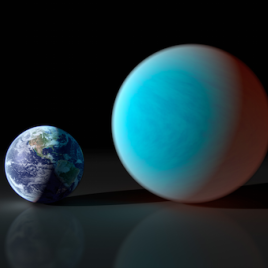
Super-Earth spotted from ground level
For the first time, astronomers have used a ground-based telescope to observe a ‘super-Earth’ – an exoplanet twice as big as the Earth – pass in front of a nearby Sun-like star. Currently, most Earth-like exoplanets are discovered by space-based telescopes like NASA’s Kepler. Scientists hope that future space telescopes such as TESS in 2017 and PLATO […]
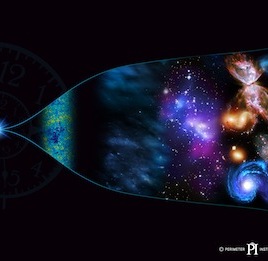
A new take on time’s arrow
Why does time flow forward? A new paper suggests that the traditional explanation is flawed and suggests a new one. Current theories invoke the law of entropy, which states that systems naturally move from more ordered states to more disordered ones. But the authors point out that the early universe – a tiny ball of […]
‘X-treme’ neutron stars
Researchers have discovered that a bright, pulsing neutron star is the source of ultra-bright X-rays coming from near the centre of the nearby galaxy Messier 82. Researchers have previously thought that only a black hole could emit so brightly in the X-ray region, but the team found that the source was pulsing, which black holes […]
Water found on Neptune-sized exoplanet
Astronomers have detected water vapour in the atmosphere of Neptune-sized exoplanet. Previously, it had only been possible to measure the atmospheric composition in large, Jupiter-sized exoplanets. Using a technique called transmission spectroscopy with which they analysed the light spectrum coming from the exoplanet, they’ve detected water molecules in the atmosphere of HAT-P-11b, an exoplanet with […]
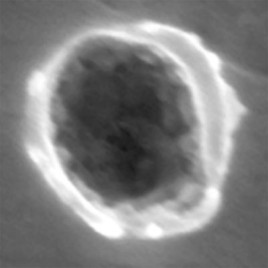
Citizen scientists help find pieces of deep space stardust
Particles discovered by volunteers sifting through photos from NASA’s Stardust spacecraft are very likely dust from the vast space between stars, according to a new paper. The particles were collected by exposing a soft absorbent material called an aerogel to the vastness of space. When the spacecraft returned to earth, the aerogel was photographed under […]
A new explanation for the Big Bang?
The big bang poses a big question: if it was indeed the cataclysm that blasted our universe into existence 13.7 billion years ago, what sparked it? Three researchers at Perimeter Institute in Waterloo, Ontario explored a new idea about what might have come before the big bang in a Scientific American cover story called The […]
